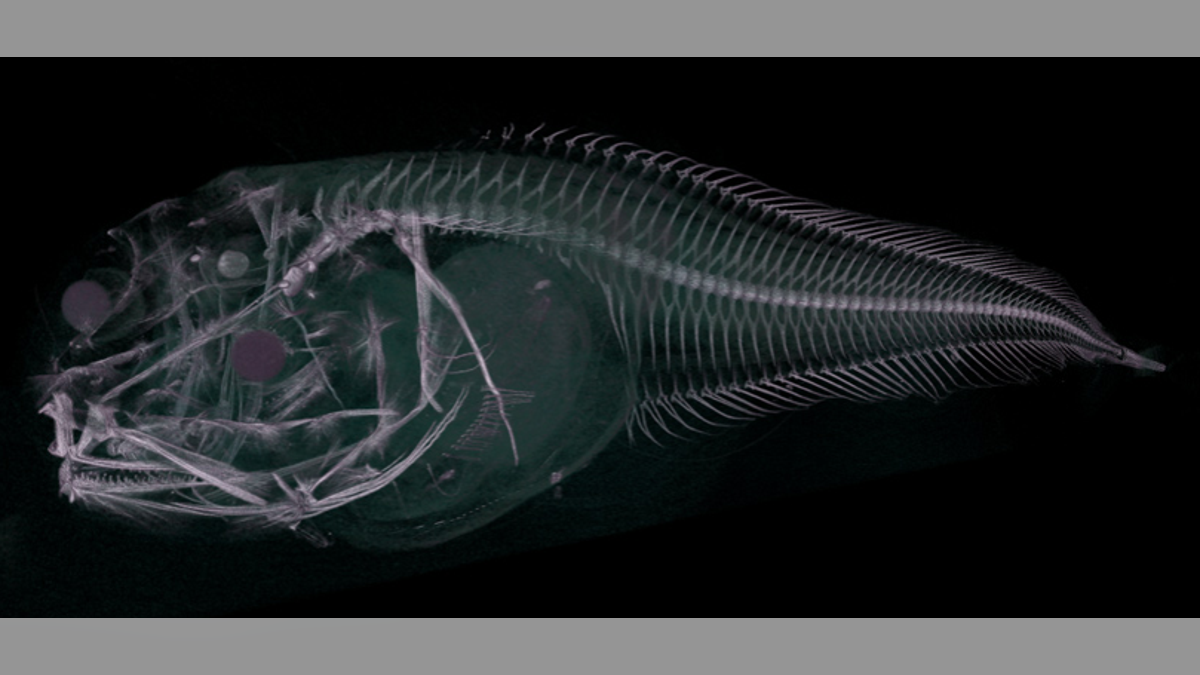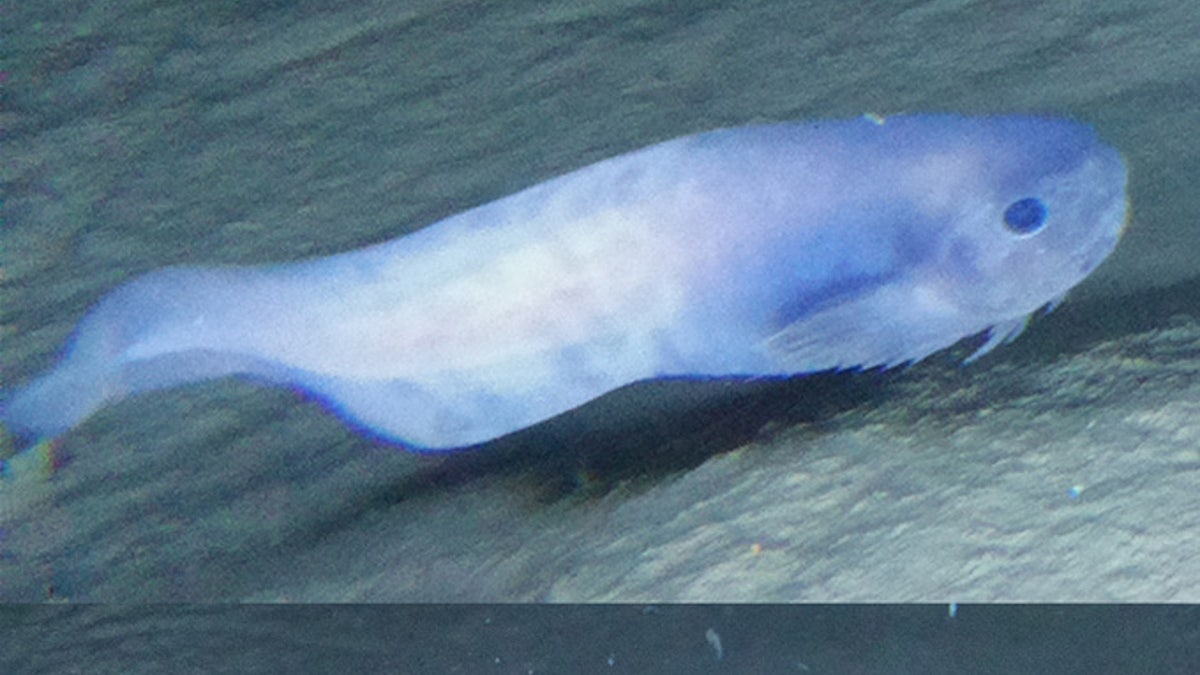
A CT scan of an Atacama snailfish, which was recently discovered in the Atacama Trench. (Newcastle University)
Three bizarre-looking types of deep sea creatures have been spotted in one of the deepest parts of the Pacific Ocean — the Atacama Trench, located up to 7 miles below the ocean's surface off the coast of Peru and Chile.
A group of 40 scientists from 17 different nations teamed up to search the freezing, pitch-black area, using cameras and other equipment.
With these tools, they were able to find three interesting creatures, which they believe are types of snailfish, about 5 miles deep. For now, the fish are simply being called the pink, blue and purple Atacama snailfish.
MYSTERIOUS FUR-COVERED SEA 'MONSTER' WASHES UP ON BEACH: 'COULD IT BE SOME ANCIENT CREATURE?'
"These fish are part of the Liparidae family and do not conform to the preconceived stereotypical image of what a deep-sea fish should look like," England's Newcastle University, which joined the expedition, wrote in a news statement Monday. "Instead of giant teeth and a menacing frame, the fishes that roam in the deepest parts of the ocean are small, translucent, bereft of scales — and highly adept at living where few other organisms can."
Researchers were able to capture footage of their new finds, and even captured one by luring it into a trap.

Scientists discovered three new species of snailfish about 5 miles below the ocean's surface. (Newcastle University)
Dr. Thomas Linley, who works at Newcastle University, said it was clear snailfish are among the top predators in the deep depths of the ocean. They use speed to their advantage.
"There is something about the snailfish (fish of the family Liparidae) that allows them to adapt to living very deep. Beyond the reach of other fish they are free of competitors and predators," he explained in an online statement.
500-POUND GOLIATH GROUPER EATS SHARK AS SHOCKED FLORIDA FISHERMEN WATCH: 'HE JUST SUCKED IT IN'
But the fish wouldn't be able to survive in warmer temperatures.
“Their gelatinous structure means they are perfectly adapted to living at extreme pressure and in fact the hardest structures in their bodies are the bones in their inner ear which give them balance and their teeth. Without the extreme pressure and cold to support their bodies they are extremely fragile and melt rapidly when brought to the surface," Linely added.
Scientists hope to continue studying the newly-discovered creatures and plan to put their findings, including video footage and photos, on display at the Challenger Conference 2018 at Newcastle University this week.